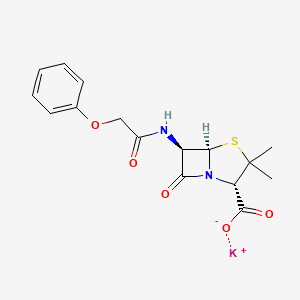Penicillin V potassium: Uses, Side Effects, Warnings


Penicillin V potassium, also known as phenoxymethylpenicillin, is a widely used antibiotic belonging to the penicillin class of drugs. It is used to treat a variety of bacterial infections, particularly those caused by Gram-positive bacteria. In this article, we will explore the properties, mechanism of action, indications, side effects, and precautions associated with penicillin V potassium.
Penicillin V potassium is a derivative of penicillin G, with a molecular formula of C16H17KN2O5S. It is a white to off-white crystalline powder that is soluble in water and slightly soluble in alcohol. Penicillin V potassium is stable in acidic environments, which allows for oral administration and absorption through the gastrointestinal tract.
As a member of the beta-lactam antibiotics, penicillin V potassium works by inhibiting the synthesis of bacterial cell walls. It does so by binding to penicillin-binding proteins (PBPs) present in the bacteria, which are essential for cell wall synthesis. This binding inhibits the formation of peptidoglycan cross-links, leading to a weakened cell wall and eventual bacterial cell lysis and death.
Penicillin V potassium is indicated for the treatment of mild to moderately severe infections caused by susceptible strains of Gram-positive bacteria. Some of the common infections for which it is prescribed include:
Additionally, penicillin V potassium may be used as prophylaxis for rheumatic fever and infective endocarditis in patients with a history of these conditions or those undergoing dental or surgical procedures.
As with any medication, penicillin V potassium can cause side effects. Some common side effects include:
Serious side effects are rare but may include:
Before starting penicillin V potassium, certain precautions should be considered:








Plus get the inside scoop on our latest content and updates in our monthly newsletter.